Listed below are selected teacher resources, picture books, fiction, and non-fiction related to computational thinking.
Teacher Resources
by Helen Caldwell and Neil Smith
Grades: K-6
Computing is about more than computers. Children can learn to analyze problems and computational terms and apply computational thinking to solve problems without turning on a computer. This book provides lesson examples and everyday activities to help teachers and students explore computing concepts such as abstraction, logic, algorithms and data representation.
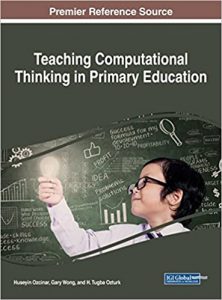 Teaching computational thinking in primary education
Teaching computational thinking in primary education
edited by Huseyin Ozcinar, Gary Wong, and H. Tugba Ozturk
Grades: K-6
This book explores the latest research on teaching computational thinking in primary education, emphasizing the importance of building computational thinking skills early on. Includes discussions of multifaceted skillsets, coding, programming methods, and digital games. eBook only.
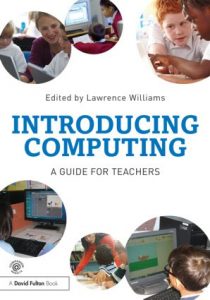 Introducing computing: A guide for teachers
Introducing computing: A guide for teachers
edited by Lawrence Williams
Grades: K-7
This book offers practical information, advice, and examples to help non-experts introduce computing as early as age 5. Includes key concepts of computing and computational thinking, ways to integrate computing across different disciplines, links to the curriculum, and how to use technology to develop higher thinking skills. eBook only.
 Creating the coding generation in primary schools: A practical guide for cross-curricular teaching
Creating the coding generation in primary schools: A practical guide for cross-curricular teaching
edited by Steve Humble
Grades: K-7
A comprehensive overview of coding in the elementary class which provides the what, why, and how of coding in the classroom. Includes sections on what is coding?, teaching computational thinking, gender bias in coding, teaching with Minecraft, and more. eBook only.
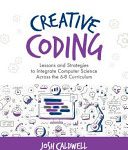 Creative coding: lessons and strategies to teach computer science across the 6-8 curriculum
Creative coding: lessons and strategies to teach computer science across the 6-8 curriculum
by Josh Caldwell
Grades: 6-8
Many students now start middle school with some foundational knowledge of computer science and coding. This new set of creative skills empowers students to express themselves in powerful ways, but students still need opportunities and support to develop and hone those skills. This book helps classroom teachers in several core content areas develop activities and projects to encourage computational thinking and coding skills, and to build bridges between those skills and practice.
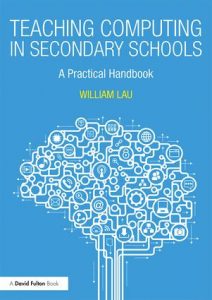 Teaching computing in secondary schools: A practical handbook
Teaching computing in secondary schools: A practical handbook
by
Grades: 8-12
A comprehensive guide to teaching computing in secondary schools which emphasizes the benefits of hands on learning opportunities that allow students to think, build, and create. Includes content on lesson planning, developing assessment tools, meeting the needs of students with diverse needs and abilities, and how to develop students’ computational thinking. eBook only.
Picture Books
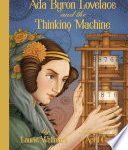 Ada Byron Lovelace and the thinking machine
Ada Byron Lovelace and the thinking machine
written by Laurie Wallmark, illustrated by April Chu
Ada Lovelace, the daughter of the famous romantic poet Lord Byron, develops her creativity through science and math. When she meets Charles Babbage, the inventor of the first mechanical computer, Ada understands the machine better than anyone else and writes the world’s first computer program in order to demonstrate its capabilities.
Fiction
 Hello Ruby: Adventures in coding
Hello Ruby: Adventures in coding
by Linda Liukas
Grades: K-3
Meet Ruby, a small girl with a huge imagination, and the determination to solve any puzzle. As Ruby stomps around her world making new friends, including the Wise Snow Leopard, the Friendly Foxes, and the Messy Robots, kids are introduced to the fundamentals of computational thinking, like how to break big problems into small ones, create step-by-step plans, and look for patterns. These basic concepts at the core of coding and programming are reinforced through exercises and activities that encourage exploration and creativity.
written by Sasha Ariel Alston, illustrated by Vanessa Brantley-Newton
Grades: 2-5
Sasha isn’t looking forward to Coding Camp, she’s worried it will be boring and doesn’t think she’s very good with computers. Sasha’s mom, who is a Software Developer, helps her build her confidence and prepares Sasha to tackle any bugs that may arise. This book will help students build confidence related to computational thinking and serve as a reminder that everyone can code.
Non-Fiction
by Ben Hubbard
Grades: K-3
Learn about some of the key areas of coding, including what programs, codes, and algorithms are; what coding is like; how coding languages are different, and how one becomes a programmer.
written by Heather Lyons and Elizabeth Tweedale, illustrated by Alex Westgate.
Grades: K-3
How do computers know what you want them to do? They receive instructions called code with the specific steps needed to perform a task. Learn how to create codes, what happens when instructions are out of order, and how mistakes are fixed. For more in the Kids get coding series, click here.
written by Heather Lyons and Elizabeth Tweedale, illustrated by Alex Westgate
Grades: K-3
Learn about programming and computer basics, including types of information, file size, and bits using real-world examples and fun illustrations. Also includes activities for both online and offline to solidify learning. For more in the Kids get coding series, click here.
by Jon Woodcock
Grades: 3-7
This book provides step-by-step instructions for students to create their own artwork, animations, sounds, and more in Scratch, a free and fun programming language. Introduces students to the basics of coding while promoting problem solving and collaboration. See also, Coding Games in Scratch and Coding in Scratch: Projects Workbook.
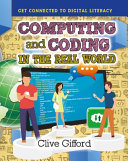 Computing and coding in the real world
Computing and coding in the real world
by Clive Gifford
Grades: 4-6
This book uses everyday objects, such as scanners at the grocery store or street lights, to show students how computing and coding is used in the real world. Also helps to acquaint students with the rules of coding which they can apply in future projects. For more in the Get connected to digital literacy series, click here.
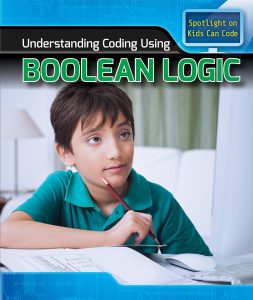 Understanding coding using Boolean logic
Understanding coding using Boolean logic
by Patricia Harris
Grades: 4-7
George Boole, for whom Boolean logic is named, developed the idea of expressing any idea as a mathematical or logical statement. Today, Boolean logic is foundational to computer programs and computer hardware, but it is also important in our everyday thinking. This guide includes an overview of logic gates and a review of differences between computer logic and human logic. For more in the Spotlight on kids can code series, click here.
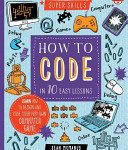 How to code in 10 easy lessons
How to code in 10 easy lessons
by Sean McManus
Grades: 6-8
This book starts by asking the question, “What is coding?” and shows what coding skills are. Then readers get to see how to use Scratch coding software to write simple code, use loops, and debug, to create a webpage, and even make a computer game. Includes easy-to-follow instructions and step-by-step graphics.
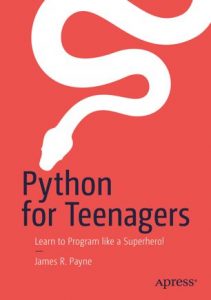 Python for teenagers: Learn to program like a superhero!
Python for teenagers: Learn to program like a superhero!
by James R. Payne
Grades: 7-12
This books is specifically designed for teens, introducing them to Python with examples and activities that are age and interest appropriate. Covers Python basics and teaches teens how to build websites, fix bugs and errors, and create their own games. eBook only.
Finding More Resources
To find more resources in this area, try the following:
- Search using the General tab on the UBC Library website to look for material in all UBC Library branches.
- Search using “Search Education Resources” box in the left hand bar on the Education Library website to limit your results to materials in the Education Library.
- Use specific search terms to narrow your results, such as “Computer programming — Juvenile literature”, “Computer science–Study and teaching”.
- To find lesson plans, include “lesson plans”, “lesson planning”, or “activity programs” in your search terms.
For more help with searching, please visit the Library Service Desk or e-mail ed.lib@ubc.ca.
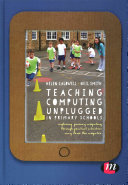 Teaching computing unplugged in primary schools: Exploring primary computing through practical activities away from the computer
Teaching computing unplugged in primary schools: Exploring primary computing through practical activities away from the computer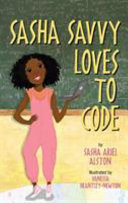 Sasha Savvy loves to code
Sasha Savvy loves to code
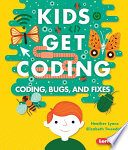
 A world of programming
A world of programming Coding projects in Scratch
Coding projects in Scratch